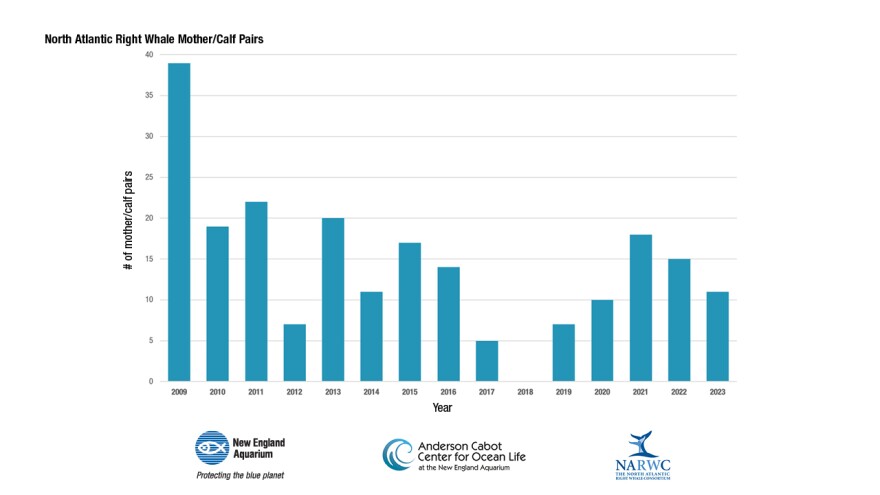The latest population estimate from the North Atlantic Right Whale Consortium suggests that the whales’ population has remained relatively steady over the last few years.
Scientists estimate there were 356 North Atlantic right whales in 2022, the most recent year with data. There is a range of error +7/-10. Scientists say they’re now hopeful the decline is leveling off.
“I'm cautiously optimistic,” said Heather Pettis, a research scientist in the Anderson Cabot Center for Ocean Life at the New England Aquarium and the executive administrator of the North Atlantic Right Whale Consortium.

By using the most up-to-date data, scientists were able to recalculate the annual population estimates of the last few years, and said they believe there were approximately 356 right whales in 2020, and 364 right whales in 2021.
It’s a stark change from just a few years ago. In 2017 alone, 17 North Atlantic right whales died and no calves were detected.
Still, Pettis said, she’s not quite ready to celebrate.
“As many whales are being born into the population,” she said, “that same number is being killed. And so we're still not giving the whales a chance to turn the decline and flattening into an increase in the population number.”
This past calving season, just 11 calves were born—fewer than the previous two years (18 in 2021 and 15 in 2022). Scientists say low birth rates, entanglements in fishing gear, and collisions with boats are largely to blame for the small population size.
It’s not yet clear what the 2023 population estimate will be, Pettis said, but already, there have been two detected right whale deaths in the last few months: a 20-year-old male struck and killed by a boat and an orphaned newborn calf.
There were likely more; research shows roughly two thirds of North Atlantic right whale deaths go undetected.

Then, there were all the injuries.
“In 2023 alone, we've documented over 30 human-caused injuries to this population. And so what that tells me is that we're still not addressing the injury part of this problem,” Pettis said. “Until we do that, we're not going to see the population increase.”
Based on photos of the injuries, the New England Aquarium concluded there were six fishing gear entanglements with attached gear, 24 entanglement injuries with no attached gear, and two boat collisions.
To end the threat of extinction, right whale conservationists are calling for better management of fisheries responsible for entanglements. They also want more regulations on fast-moving cargo ships, ferries, and pleasure boats, all along the east coast.
If humans can reduce their impact on the species, Pettis said, the population could recover.
“The whales are capable, they're resilient, they'll find food, they'll reproduce,” she said. “They just need a little bit of breathing room from being injured, being killed.”








